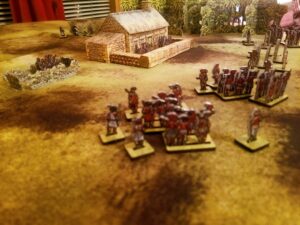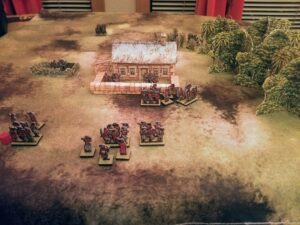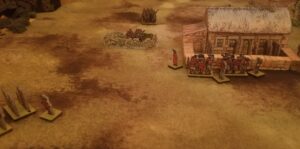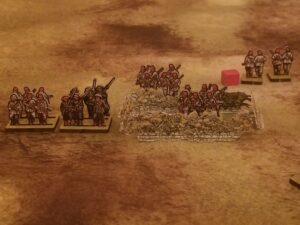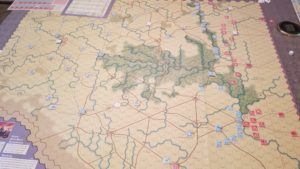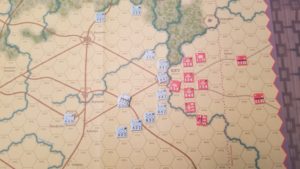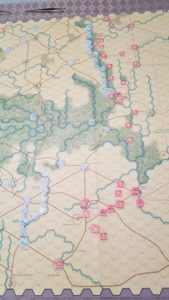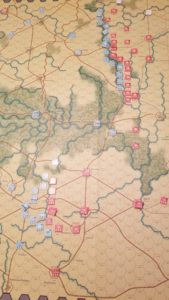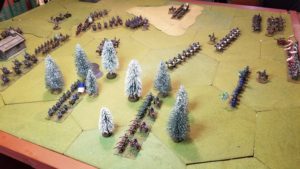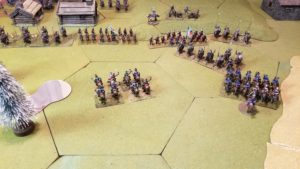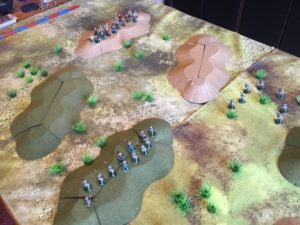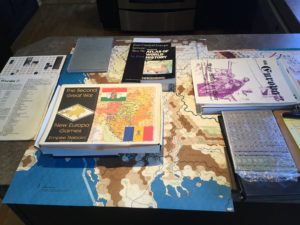Enough of the musings for now.
Been playing an African scenario using “The Men Who Would Be Kings” rules by Osprey.
Threw out a terrain cloth on a living room table, set up some paper scenery, and organized my WoFun troops.
One of the criticisms leveled at these rules is that Tribal units are battered by modern weapons fire and are quickly pinned and attritted without getting close enough to to melee with the Colonial regulars or irregulars.
So, I set up a small “Last Stand” scenario to judge for myself. All Tribal units had a morale rating of seven (7), with the Colonial at six (6). Morale checks involve a D6x2 role equal to or greater than the morale rating.
My first try involved a force ratio of 1:1 and, sure enough, the tribal units were paralyzed and shredded. I increased the number of tribal units for my second try.
The colonial troops are deployed by sections of six (6) figures, with a unit comprising two sections or twelve (12) figures as per Rules As Written (RAW). The colonial force is comprised on Askaris (classed as Irregulars) with a section of Naval Infantry (classed as Regulars – better morale and melee capability). Tribal units/bands are sixteen figures (16) each, as per RAW.
The initial set-up looking northeast. Askaris occupy the fortified house and a zariba. Reinforcements are somewhere in the offing. I’ll trigger their movement with a “Yes/No” die roll when the Tribal units get within a charge move of the house. Right now – given table space – the Tribal units are at long range, one move from where they are on the table.
Tribal advance hampered by failed activation checks. But, one unit charges an Askari section engaging in melee. Overwhelmed, the Askaris are destroyed, without inflicting a casualty. The Tribal band occupies one half of the Askari fortified position. The other Tribal units advance, taking casualties. One pinned band is destroyed by fire from the zariba position.
Another Tribal band assaults the house, engaging the other Askari section. The reinforcements, after some hesitation, advance in column at the quick. The Tribal band concealed in the elephant grass fails their activation check, losing their chance at an ambush, and remain in place.
Reinforcements arrive, advancing past the fleeing Askaris (red cube indicates pinned – and needing a morale check) to support the zariba position, choosing not to re-take the house. This may be a tactical error. One Askari section needs to take additional time to enter the zariba.
I’ll get back to the game this evening.
